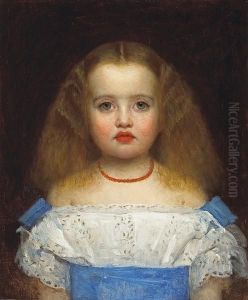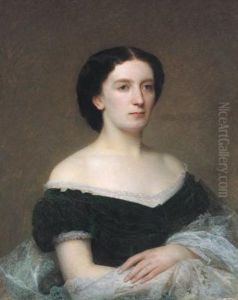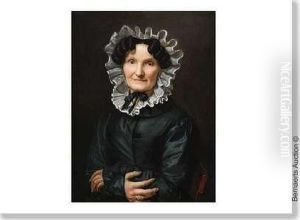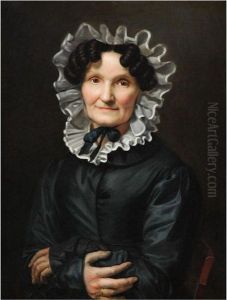Lieven De Winne Paintings
Lieven De Winne was a Belgian portrait painter born on January 10, 1821, in Ghent. He is known for his realistic portrayal of subjects and meticulous attention to detail, which earned him a reputation as one of the leading portraitists of his time in Belgium.
De Winne began his artistic education at the Royal Academy of Fine Arts in Ghent, where he studied under the guidance of Pieter Van Hanselaere. He further developed his skills and style, which was primarily influenced by 17th-century Dutch painting and the Flemish tradition. De Winne's work was characterized by a strong sense of realism and often depicted the middle-class bourgeoisie, clerics, and aristocrats.
The artist's career took a significant turn when he won the Gold Medal at the Ghent Exhibition in 1846. This accolade brought him considerable fame and led to numerous commissions from prominent individuals seeking to have their likenesses captured by his skilled hand.
In 1851, De Winne moved to Paris, which at the time was the epicenter of the art world. There, he was exposed to the works of contemporary French artists, which further influenced his already established style. Despite the vibrant artistic scene in Paris, De Winne maintained his focus on portraiture, refusing to be swayed by the emerging trends of Impressionism that began to take hold during his time there.
One of De Winne's most significant contributions to art was his role in the revival of the art of portraiture in Belgium. He was known for his ability to capture not only the physical likeness of his subjects but also their character and personality. His portraits are marked by a psychological depth that was not commonly found in the works of many of his contemporaries.
Lieven De Winne's dedication to his craft earned him various honors, including his appointment as a professor at the Academy of Fine Arts in Ghent, where he once studied. He taught and influenced a new generation of artists, passing on his techniques and appreciation for the subtleties of portraiture.
De Winne's life and career, however, were cut short when he died on July 9, 1880, in Ghent. Although he did not live to see the full impact of his work, his legacy has endured, and he is remembered as a master portraitist who contributed significantly to the history of Belgian art. His paintings are held in various museums and private collections, where they continue to be admired for their technical proficiency and emotive power.



